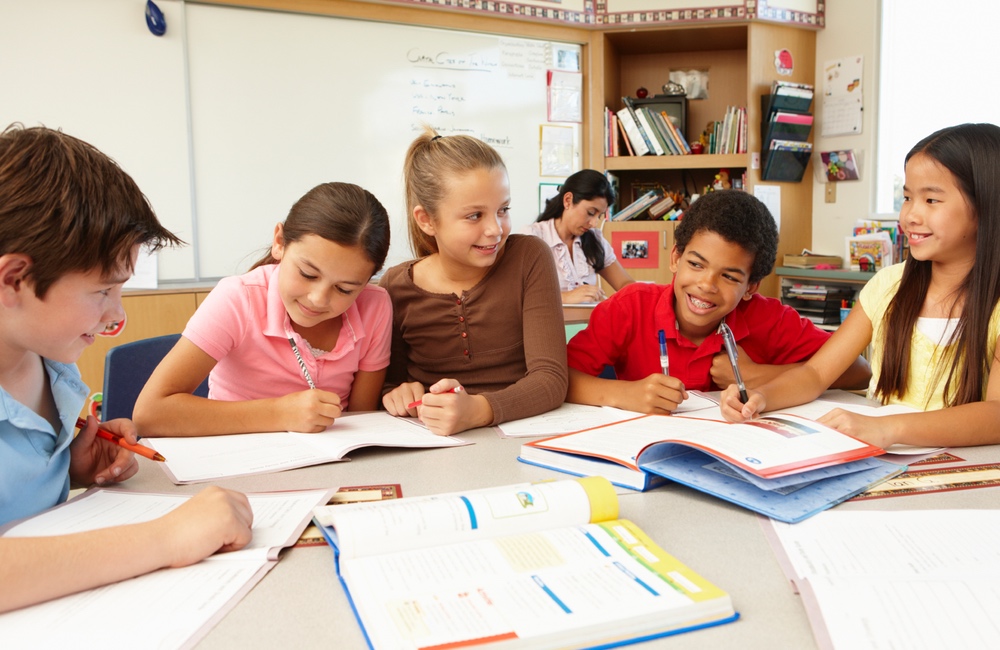When children work on problems together in groups, the ideas and reactions of their peers give them a broader perspective that makes them better at figuring out complex issues than children who study the same issues alone while being led by their teacher. That's the conclusion of a study that focused on how children go about making decisions.
“Collaborative group work positions students as active decision-makers, whereas direct instruction places them in a passive role, following the reasoning of their teacher,” explained Xin Zhang, the study's lead author, in a statement.
The study looked at over 750 fifth-graders, mostly African-American or Hispanic and mostly from low-income families. The students spent six weeks grappling with the pros and cons of whether a community should hire professional hunters to kill a pack of wolves that had been creating problems for its residents.Those who had worked in groups wrote essays that were more likely to consider both sides of the issue and to consider a broader range of reasons that supported those two positions.
The idea was not to lead students to a predetermined best answer but to explore how one goes about making responsible and reasoned decisions. After meeting in their groups or listening to their teacher's discussion of the issue, the students wrote an essay explaining their personal decision on what should be done about the wolf pack, considering factors that ranged from the ecological to the financial.
The entire exercise served as training for another thorny problem, this one a moral dilemma.
Jack's unpopular friend Thomas has won a pinewood derby competition but his brother helped him build the winning car, which is against the rules. Thomas tells Jack about this breaking of the rules, leaving Jack in the unenviable position of having to choose whether to keep Thomas' confidence or reveal his transgression.
The students had to decide what Jack should do. Once again, they wrote an essay.
This suggests that those who worked in groups on the wolf project gained skills that made them better decision makers in general since Jack's dilemma had little in common with the wolf problem.
Girls were significantly better than boys at recognizing Jack's predicament and were more likely to weigh reasons when considering opposing viewpoints, but the authors suggest that this could be related to girls' better writing ability.
Teaching to the test tends to favor the sorts of questions that have clear answers and ignores the exploration of problems that require considering nuance and complexity. “If children are to become thoughtful decision-makers, they need more time in the school day for collaborative group work that involves active reasoning about significant issues,” Zhang, a doctoral student in psychology at the University of Illinois at Urbana-Champaign, added.
The study appears in American Educational Research Journal.





